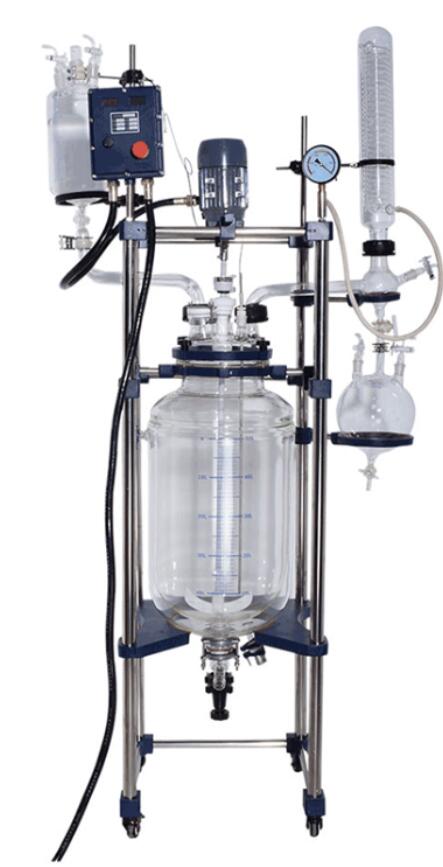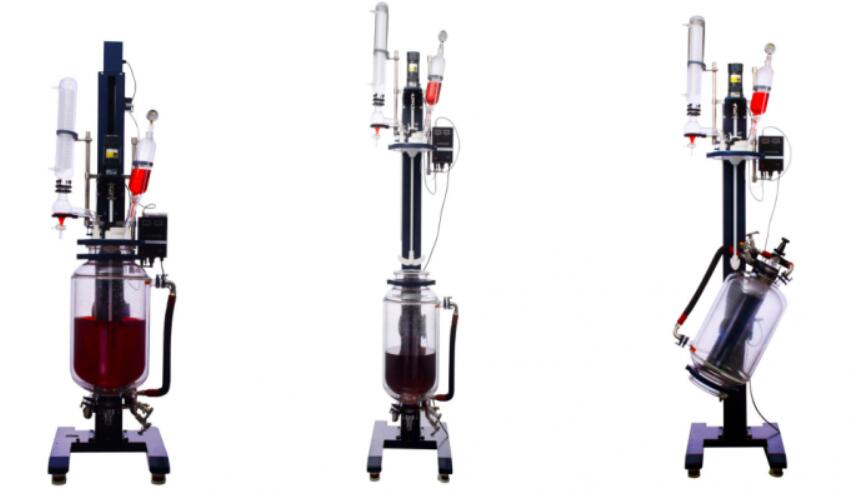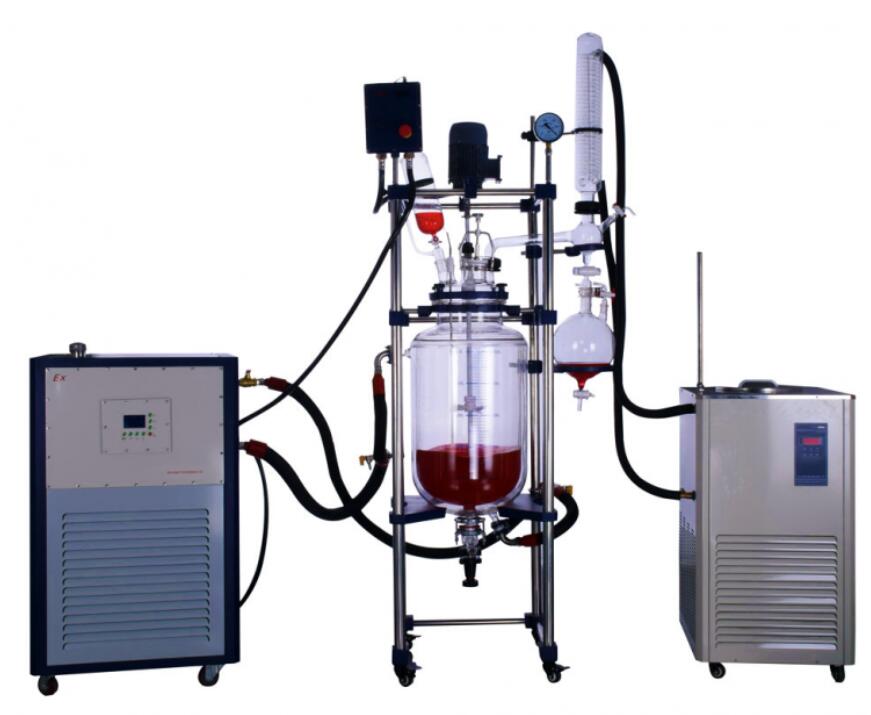The three-layer glass reactor is a popular glass reactor type that you can use for a prolonged duration of time. By virtue of comprising three layers, this glass reactor is tougher and more resilient to the common agents of damages and deterioration. We devote this discussion to find out more about it.

What Is A Three Layer Glass Reactor?

For a start, a three-layer glass reactor is a chemical apparatus that is used to facilitate the reactions of substances. Its makeup comes in the forms of three layers of glass. These layers provide the strength and reliability necessary to derive the required ends for a longer amount of time.
Generally speaking, the three layers create a near-total vacuum which is crucial at expediting the reactions altogether. They also reinforce the walls in such a way as to make the same resilient to the issues of explosions and fire outbreaks. These make the reactors firm enough not to collapse or imperil you.
Further complementing this strength is the equally tougher sealing. In many cases, the sealing used is the legendary Polytetrafluoroethylene material. This one not only makes the joints tougher but also wards off the intrusion of ambient air and moisture. It also ups the efficiencies of the reactions altogether.
This kind of reactor finds applicability in many fields and environments. Among these are the laboratory settings, light industries, chemistry labs, and research and development fields.
The Features of Three Layer Glass Reactors

1. Induction Motor
These glass reactors contain induction motors. The motors are the ones that provide the power and drive which is needed to make the rector handle the reactants. This kind of motor is known to be powerful and safe in equal measure. In particular, it does not produce sparks and brushes.
2. High Borosilicate Glass Walls
The walls of these reactors are naturally made of the high borosilicate glass. This kind of glass comprises awesome physical, and chemical properties. It is these that in turn provide the strength and vitality that is necessary to endure the test of time. Moreover, they also prevent the glass from exploding when handling high heat.
3. Decentralization Material Mouth
These reactors ordinarily possess large decentralization material mouths. It is via these mouths that you get to pour the reactants into the reactor. Being wide, the mouths give almost no room for the likelihood of spill-offs and other dangers that come along when poring the reactants.
4. Polytetrafluoroethylene Valve
A valve that is made of the strong and firm Polytetrafluoroethylene material also forms a vital part of this glass reactor. The valve, as you may have already guessed, regulates the inflow and outflow of reactants. In doing so, it also serves the secondary role of enhancing your own safety.
5. Reactor Lid
It does have a lid whose aim is to completely fix the reactants in the reaction chamber. The lid prevents the exhausts from escaping and filling the interiors of the rooms. Thus, it contributes to the overall safety and well-being of you, the researcher.
6. Solid Materials Outfeed
The solid materials outfeed comes in last among the top features of the three-layer glass reactor. This outfeed pulls the products out of the reaction chamber. It has the ability to channel out solid materials over and above the liquid counterparts. This is the one you engage to derive the outcomes of your chemical reactions.
The Specifications of Three Layer Glass Reactors
| Model | T-1 | T-2 | T-3 | T-5 | T-10 | T-20 | T-30 | T-50 | T-80 | T-100 | T-150 |
| Volume(L) | 1 | 2 | 3 | 5 | 10 | 20 | 30 | 50 | 80 | 100 | 150 |
| Motor Power(W) | 40 | 60 | 60 | 90 | 120 | 120 | 180 | 180 | 250 | 250 | 370 |
| Speed(r/min) | 10-680 | 10-680 | 10-680 | 10-680 | 10-680 | 10-680 | 10-680 | 10-680 | 10-680 | 10-680 | 10-680 |
| Stirring torque(1300r/min) | 2400.g.cm | 5000.g.cm | 5000.g.cm | 9000.g.cm | 12000.g.cm | 12000.g.cm | 15000.g.cm | 15000.g.cm | 22000.g.cm | 22000.g.cm | 28000.g.cm |
| Inside/Outside tube diameter(mm) | 150*180 | 150*180 | 200*230 | 200*230 | 245*260 | 315*360 | 315*360 | 360*405 | 460*500 | 460*500 | 600*550 |
| Reactor vessel cover relevant opening size – center | 50# | 50# | 50# | 50# | 50# | 50# | 50# | 50# | 50# | 50# | 50# |
| Reactor vessel cover relevant opening size – left | 29# | 29# | 29# | 29# | 40# | 40# | 40# | 40# | 40# | 40# | 40# |
| Reactor vessel cover relevant opening size – right | 24# | 24# | 24# | 24# | 34# | 34# | 34# | 34# | 34# | 34# | 34# |
| Reactor vessel cover relevant opening size – later | ‘– | ‘– | ‘– | 24# | 34# | 34# | 34# | 34# | 34# | 34# | 34# |
| Reactor vessel cover relevant opening size – before | 14# | 19# | 19# | 29# | 29# | 29# | 29# | 29# | 29# | 29# | 29# |
Three Layer Glass Reactor vs. Double Layer Glass Reactor vs. Single Layer Glass Reactor

It goes without saying that the three-layer glass reactors are not the only ones we have around. Indeed, there are two more others that have more or less similar levels of convenience and applicability. These are the double and the single-layer glass reactors respectively.
We are going to compare and contrast them here.
1. Number of layers
As their names imply, the three-layer glass reactor comprises three layers, the double-layer reactor has two layers and the single-layer reactor has only one layer. On the basis of this consideration, the three-layer glass reactor is the strongest and most reliable. This makes them awesome for those applications that are ordinarily too daunting.
The double and the single layers are the weakest respectively. On account of this, they are lighter and more convenient to handle around. They might not really stand tall to the harsh elements of reactions like sparks, explosions, and regular handling. Nonetheless, they are good for studies and practice.

2. Size
By reason of possessing three layers, the three-layered glass reactors are larger in size. They not only occupy a larger size or area but also provide a larger reaction chamber. In light of this, the reactor is capable of holding plenty of reactants at a time.
The double and the single-layer glass reactors, on the other hand, are slimmer and more compact in size. They subsequently take up limited space and at the same time provide only a limited reaction space for you. This makes them only capable of holding a limited quantity of reactants at a time.

3. Weight
Obviously, the three-layer glass reactors are weightier than the double and single-layer counterparts. The excess weight is mainly brought about by the three glass layers and the extra-large glass sizes. Owing to this extra weight, the three-layer glass reactor is quite cumbersome to carry around as need be.
As noted, the double and the single-layer glass reactors are lighter, slimmer, and more compact in size. They are subsequently more convenient to handle and carry around. Unfortunately, their capacities are limited and will not really do you the job of facilitating the complex reactions.

4. Applicability
All factors considered, the three-layer glass reactors are more comprehensive in scope and stature. They are able to handle just about every other kind of chemical reaction. Further, they also find applications and use in many areas. Examples are the laboratories, food industry, research, and development.
The double and the single-layer glass reactors are however limited in scope and stature. They are subsequently applicable for only light roles which are similarly not so complicated. You will hence not really find them awesome for tackling those chores that are available in the real world. Only for educational settings.

5. Expertise
Needless to say, you need varying levels of expertise to handle these reactors. The levels of expertise depend mainly on the number of layers that make the glass reactors up. Of these three kinds of reactors, the three-layer variety is the most sophisticated. It hence requires an above-average level of expertise to handle.
The single and the double-layer glass reactors, on the other hand, are simpler in stature and scope. Subsequently, they are simpler to engage and make use of. You will find them pretty suited for your engagement in case you have never attempted to use such kinds of apparatus before.

6. Safety
A combination of the three layers, a lid, and tough construction makes the three-layered glass reactor safer and more reliable for use. Even when tackling potentially explosive reactions, this kind of glass is unlikely to shatter and explode. You have it for taking if you are the kind of person who handles very reactive substances.
The double and the single layers, on the other hand, are less safe. For this reason, you cannot use them for any other kind of reaction. You must limit the use of these reactors only to those chemicals that have weaker potency and are less likely to explode when mixed.

7. Costs
In closing, the costs of these glasses vary. The three-layer glass reactors definitely are the most expensive. This is understandable because they are the largest, weightiest, and most comprehensive in scope and construction. Next comes the double-layer glass reactors. Its two glass walls are what places it second.
Finally, the single-layer glass reactor is the cheapest. This is mainly made possible by the one layer of glass, which is, of course, cheaper to come by. If financial resource endowment is your topmost concern, this is the one to start out with. In case money is not an issue, the three-layer glass reactor is truly the best.

WOW! We have indeed labored to showcase to you the finer details of the three-layer glass reactor. Having exhausted what we had for you, we now ask you to pick up from where we have stopped. Simply read through our explanations and then figure out how best to utilize the insight we have furnished.

